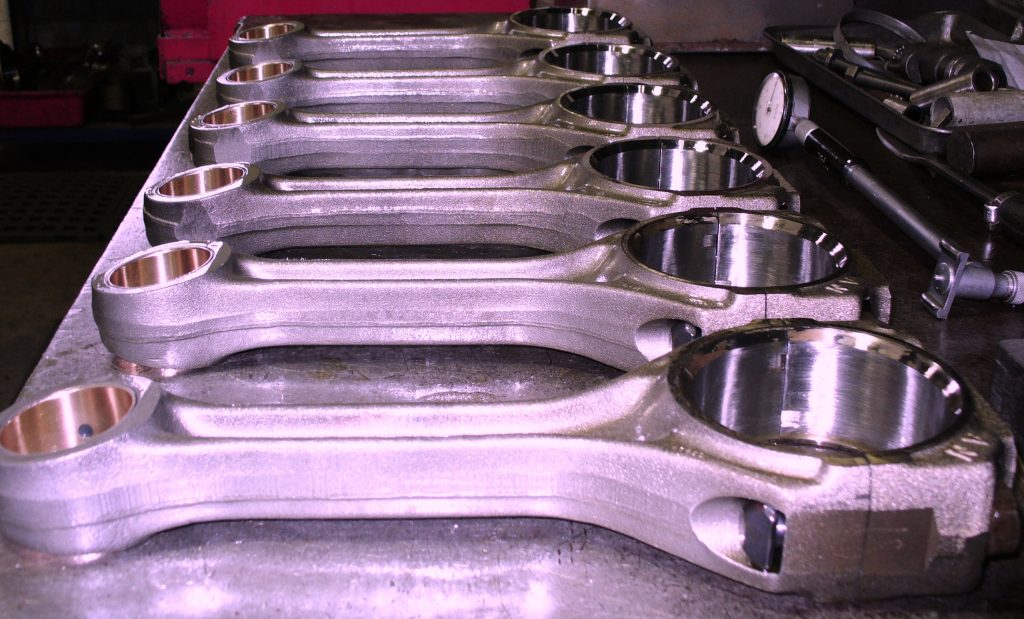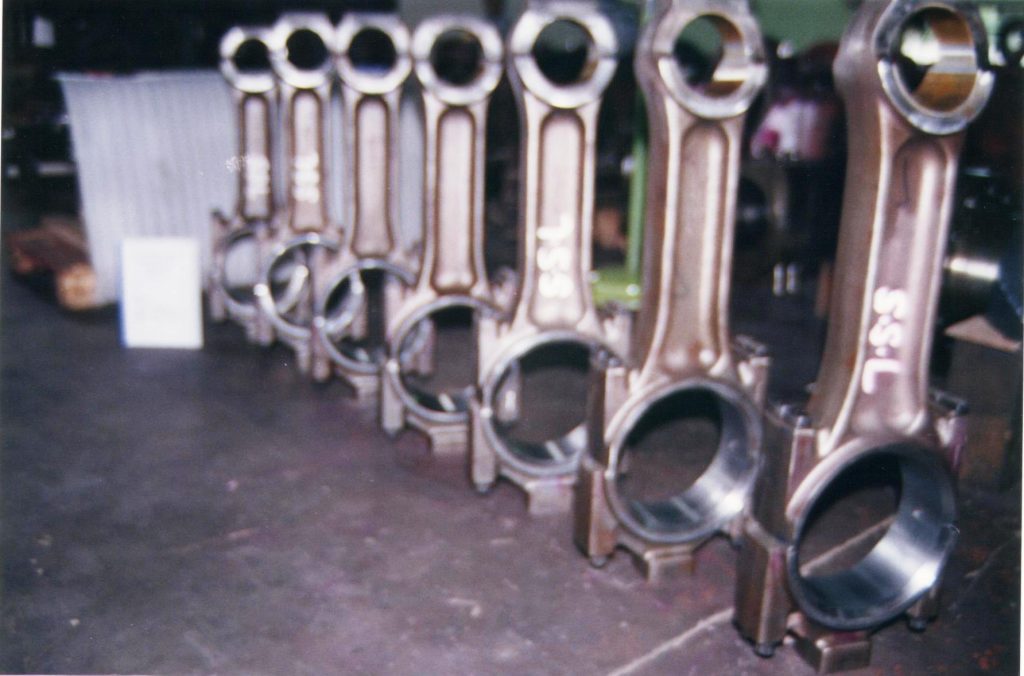At RA Power Solutions, we understand that connecting rods endure immense operational stresses—from rapid acceleration and deceleration to reciprocating motion and high rpm. Over time, wear and tear can lead to taper and ovality, misalignment, and even micro-cracks in rods and bolts.
Why Connecting Rod Reconditioning Matters?
- High-pressure environment: The connecting rod sustains piston weight, combustion shock loads, and high rpm—making accurate alignment and dimensional integrity essential.
- Common defects: Big and small end taper or ovality, loss of centerline alignment, and fatigue-related bolt cracks. These issues affect efficiency and can lead to costly engine failure.

Coverage Across Multiple Engine Brands
With over 45 years of expertise, RA Power Solutions reconditions connecting rods for all major marine and industrial diesel engines, including: MAN‑B&W, Sulzer, Wärtsilä, Mak, Deutz, Pielstick, Mitsubishi, Daihatsu, Yanmar, Bergen, Niigata, Caterpillar, Paxman, Crepelle, and many more.
We also stock a vast inventory of reconditioned rods—pricings typically one-third of new OEM parts, offering substantial savings without compromising quality.
Key Benefits at a Glance
| Feature | Benefit |
| Comprehensive testing | MPI crack detection ensures safety |
| Accurate machining | Maintains precision tolerances |
| OEM-level certification | Quality assurance with calibration reports |
| Significant cost savings | Up to ~66% cheaper than new rods |
| Large inventory coverage | Support for dozens of engine makes/models |
Following steps are followed for reconditioning and resizing of connecting rod
- We check the connecting rod for parallelism and alignment. We also inspect the big end and small end for taper and ovality.
- RA Power Solutions Pvt. Ltd. recommends not repairing connecting rods that are bent, based on their experience.
- We perform crack detection by MPI on the bolt seating area and bolts during connecting rod reconditioning.
- The connecting rod bolts are under heavy stress all the time and develop hairline cracks. It is recommended to replace connecting rod bolts after certain hours of operation as specified in the manual.
- We re-bore the connecting rod big end to the standard size and maintain the required tolerances. For the small end, we recommend replacing the bush and re-boring it while ensuring the center distance between the big end and small end bores matches the manufacturer’s specifications..


Ready to Retrofit Your Engine with Reconditioned Connecting Rods?
Boost engine reliability and slash maintenance costs with precision-engineered, certifiable connecting rod reconditioning. We’re here to support your marine, industrial, or power generation needs with global reach and expert execution.


For more information regarding Connecting Rod Reconditioning, Connecting Rod for marine engine. Contact us at rajshahani@rapowersolutions.com or info@rapowersolutions.com, or call us at +91 9582647131 or +91 9810012383.
Connecting rod reconditioning is the process of restoring worn or damaged connecting rods to their original specifications. It includes checking for cracks, re-boring the big and small ends, replacing bushes, and ensuring alignment and correct center-to-center distance.
Reconditioning is recommended when there is excessive ovality or taper in the big or small end bores, loss of alignment, visible wear, or damage caused by overheating or improper lubrication.
No. If the connecting rod is bent or has deep cracks (especially around the bolt seating area), it is not recommended for repair. We evaluate each rod individually using MPI and dimensional checks.
The bush ensures the correct fit and function of the piston pin. Replacing and re-boring the bush helps maintain proper clearance and ensures the center distance between the big and small end is within OEM specifications.
We use Magnetic Particle Inspection (MPI) to detect surface cracks. Dimensional checks are performed for parallelism, taper, ovality, and alignment. Final measurements are verified against manufacturer tolerances.

